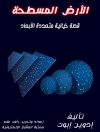ISFPs are introverted, but once the initial barrier is overcome, they are affectionate and fun; the typical ISFP wants to live life to the fullest! In this book you will find seven short stories specially selected to please the tastes of the ISFP. These are stories by renowned authors that will surely bring reflections, insights and fun to people with this kind of personality.
This book contains:
– The Last Leaf by O. Henry.
– A Work of Art by Anton Chekhov.
– The Legend of Sleepy Hollow by Washington Irving.
– The Upturned Face by Stephen Crane.
– The Unknown Masterpiece by Honoré De Balzac.
– A Hunger Artist by Franz Kafka.
– Rashomon by Rynosuke Akutagawa.For more books that will suit you, be sure to check out our Two Classic Novels your Myers-Briggs Type Will Love collection!
***
Cover image: Marie Antoinette (1755-1793), last Queen of France and ISFP.
Tentang Penulis
William Sydney Porter, better known by his pen name O. Henry, was an American short story writer. O. Henry’s stories frequently have surprise endings. In his day he was called the American answer to Guy de Maupassant. While both authors wrote plot twist endings, O. Henry’s stories were considerably more playful, and are also known for their witty narration. Most of O. Henry’s stories are set in his own time, the early 20th century. Many take place in New York City and deal for the most part with ordinary people: policemen, waitresses, etc.
Anton Pavlovich Chekhov was a Russian playwright and short-story writer, who is considered to be among the greatest writers of short fiction in history. His career as a playwright produced four classics, and his best short stories are held in high esteem by writers and critics. Along with Henrik Ibsen and August Strindberg, Chekhov is often referred to as one of the three seminal figures in the birth of early modernism in the theatre. Chekhov practiced as a medical doctor throughout most of his literary career: ‘Medicine is my lawful wife’, he once said, ‘and literature is my mistress.’
Washington Irving was an American short story writer, essayist, biographer, historian, and diplomat of the early 19th century. He is best known for his short stories ‘Rip Van Winkle’ (1819) and ‘The Legend of Sleepy Hollow’ (1820), both of which appear in his collection The Sketch Book of Geoffrey Crayon, Gent. His historical works include biographies of Oliver Goldsmith, Islamic prophet Muhammad, and George Washington, as well as several histories of 15th century Spain that deal with subjects such as Alhambra, Christopher Columbus, and the Moors.
Stephen Crane was an American poet, novelist, and short story writer. Prolific throughout his short life, he wrote notable works in the Realist tradition as well as early examples of American Naturalism and Impressionism. He is recognized by modern critics as one of the most innovative writers of his generation.
Honoré de Balzac was a French novelist and playwright. The novel sequence La Comédie humaine, which presents a panorama of post-Napoleonic French life, is generally viewed as his magnum opus. Owing to his keen observation of detail and unfiltered representation of society, Balzac is regarded as one of the founders of realism in European literature. He is renowned for his multi-faceted characters; even his lesser characters are complex, morally ambiguous and fully human. Inanimate objects are imbued with character as well; the city of Paris, a backdrop for much of his writing, takes on many human qualities.
Franz Kafka was a German-speaking Bohemian novelist and short-story writer, widely regarded as one of the major figures of 20th-century literature. His work, which fuses elements of realism and the fantastic, typically features isolated protagonists facing bizarre or surrealistic predicaments and incomprehensible socio-bureaucratic powers, and has been interpreted as exploring themes of alienation, existential anxiety, guilt, and absurdity.
Rynosuke Akutagawa was a Japanese writer active in the Taish period in Japan. He is regarded as the ‘Father of the Japanese short story’ and Japan’s premier literary award, the Akutagawa Prize, is named after him. He committed suicide at the age of 35 through an overdose of barbital.












